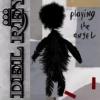
The Paradise and the esoteric origin of mankind
By
litewave, in Lana Thoughts
-
Recently Browsing 0 members
No registered users viewing this page.

By
litewave, in Lana Thoughts
No registered users viewing this page.